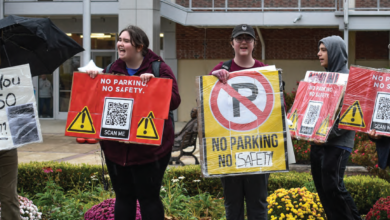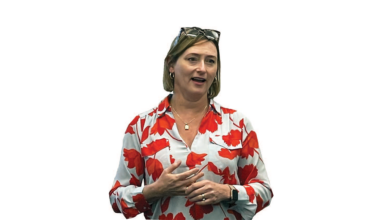
Campuses on high alert: Students react to FSU shooting
By Zyheim Bell
On April 17, a deadly shooting took place on Florida State University’s campus, just two years after Rider’s 52-minute shelter-in-place, calling into question the preparedness of college campuses regarding gun violence and testing morale among the student body.
Though shootings taking place on college campuses are not unheard of, they occur too infrequently for many universities to know how to respond.
Senior criminal justice major Gabriella Steele described the events at FSU as “heartbreaking.” She felt that, as a fellow college student, it was hard to imagine handling the situation.
“We [students] are always on the go and making plans. Never do you think a mass shooting will happen to you or around you,” Steele said.
Steele stressed the importance of the school to “check the pulse of the community.”
“We have seen so many active shooting situations … checking the pulse of the community is important. Do they feel safe on this campus right now,” Steele said.
For senior exercise science major Emma Rambo, these shootings “are a reminder of the ongoing concerns surrounding gun control and protections on campuses.”
Emergency preparedness
Since the 2023 shelter-in-place, Rider has taken many steps toward improving safety and emergency preparedness.
The Community Wellbeing Committee , the purposed implementation of the Rave app, additional surveillance cameras have been installed across the campus and additional safety locks and measures added to campus.
Multiple hostile intruder training sessions were also held in hopes of improving response capabilities for the community. Steele attended one of the training sessions.
“[The training] further proved Rider is not prepared for these given situations.” Steele said.
She felt that the training affirmed many issues she had with Rider’s ability to handle emergency situations, such as these.
“Though it [campus shootings] didn’t happen in the area, they should have been prepared. There should have been some type of standard in place,” Steele said.
Many college campuses do not have the infrastructure to handle hostile intruder situations. Rider was previously called out for its “fishbowl” classrooms. During the 2023 shelter-in-place, the exposed classrooms became a serious concern. Two years later, the classrooms remain the same.
How do you protect a classroom with a floor to ceiling window? How do you properly secure an open campus?
“Rider is treated like a park and not a campus,” Steele said.
She felt that “anyone could walk on this campus,” a concern shared among Rider students.
Another shared sentiment was how many of Rider’s most frequented buildings offer no safety measures. Students during the 2023 shelter-in-place felt exposed by the glass exteriors of Cranberry’s and the Student Recreation Center.
Mistrust and aftermaths
With the most recent shooting at FSU, college students are once again facing the reality that campus shootings are a real possibility and a shooter can be someone right in the room with them.
“How can you trust the people among you on a daily basis?” Steele said.
“After [the FSU shooting] and the one that happened at Rider, I for sure keep my head on a swivel.” Steele said.
Steele was jaded by the abrupt return to normal after the 2023 shelter-in-place.
“Return to normal is typical of the Rider community,” Steele said. “Something happens Tuesday and then by Wednesday we have to sweep it under the rug and return to being students.”
Rambo believes that incidents such as these exposed “cracks in our school’s foundation.”
For the students present on campus in 2023, the event was nerve racking and brought to light just how quickly one could find themselves in the middle of a crisis.
Cecilia Simon, a senior political science major, said, “… [campus shootings] was something that was really abstract until I thought I was in one.”
Rider has made changes around the campus, but for students like Simon, “they haven’t communicated them in a way that students feel it.”
Students need to feel that changes are being made and universities have to work to rebuild trust between the student body and administration.
Rambo is happy that the school provides safety measures like the campus blue lights, but she admits to never seeing them used under crisis and expressed nerves about whether responses would be sufficient during a moment of crisis.
Simon also holds reservations about the capabilities of the blue lights.
“Every time I’ve seen one of those lights go off, it takes far more than two minutes for public safety to respond,” Simon said.


